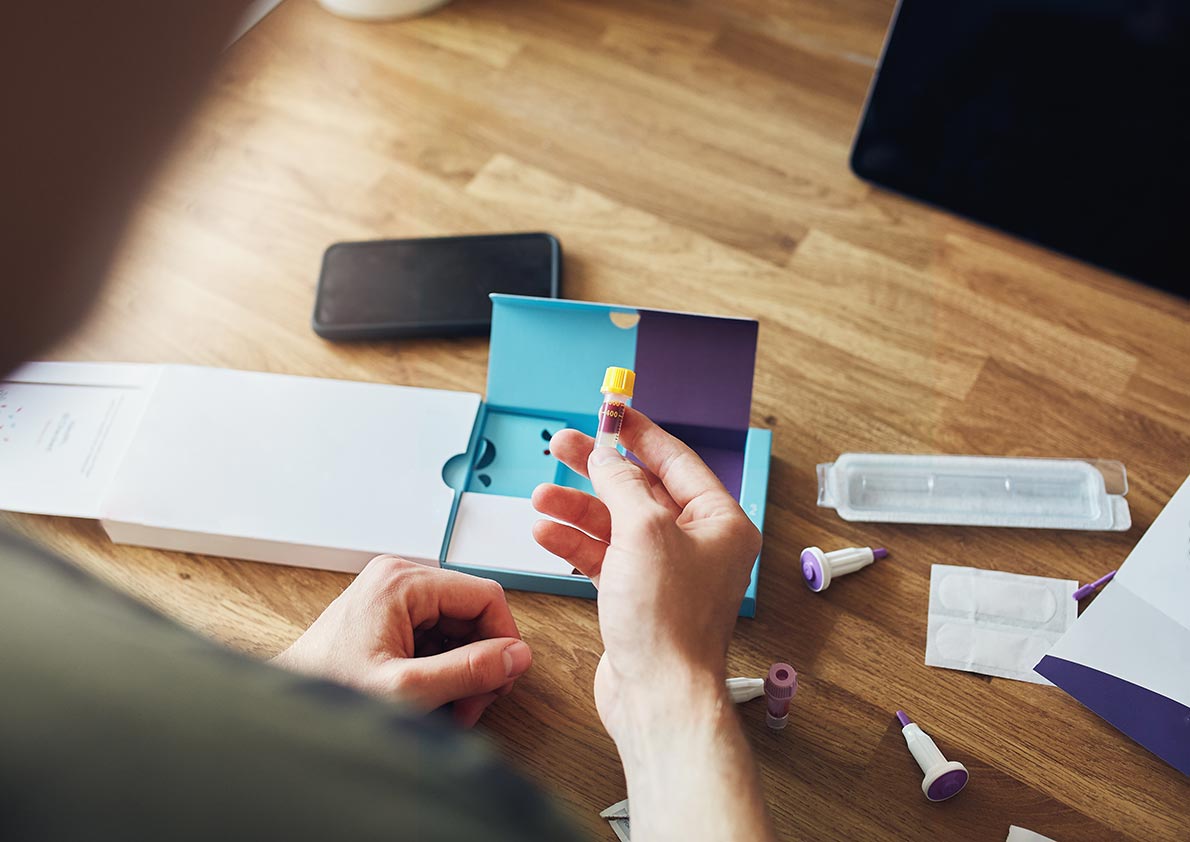If you suffer from low testosterone levels, you might be feeling a little bit isolated. Don’t worry, you’re not alone. Plenty of men deal with this exact situation and there are ways to manage it.
If you plan on pursuing testosterone replacement therapy (or TRT, for short), you should probably make yourself aware of what to expect before and after TRT.
It’s a fairly straightforward process, but there are things that you’ll want to consider beforehand and a few situations that you might want to prepare for that will be coming your way once the treatment actually begins.
Knowing things ahead of time will allow you to relax a little bit and not have any unpleasant surprises when changes actually begin to happen. This is something that you want to go into with research!
So here’s what to expect when you’re expecting testosterone replacement therapy.
Before and After TRT: Are There Big Changes?
Testosterone replacement therapy is a medical procedure and not everyone has the same results. Your results will depend on many different factors, including your testosterone levels at the beginning of the treatment and your overall health.
Going into this treatment with a realistic outlook will help keep you from getting disappointed. There’s a lot of misinformation about testosterone on the internet. There are so many good things about testosterone replacement therapy, so there’s no need to lie about it.
There will be some negative changes (though most of them are mild) and there will be serious positive changes. Remember, you’re in this because you’re suffering from low testosterone. TRT will solve that problem.
Everyone’s testosterone timeline looks a little bit different, so don’t be alarmed if you aren’t seeing the results that you expect as quickly as reviews online may have made it seem. Your body is a machine and it needs to get used to the new conditions. That’s okay!
Before Your Testosterone Replacement Therapy
When you discover that you have low testosterone levels, you’ll probably begin seeking out options for treatment. You won’t be able to jump right in, though. There are a few steps that you’re going to have to take in order to get the ball rolling, so to speak.
This is to ensure your safety and to make sure that you’re in the proper health to be receiving any kind of hormone therapy. Remember, this is a medical procedure!
It’s possible that not all of these tests will be run, but keep in mind that you may need some of them.
A Sleep Apnea Screen
This one might seem strange: TRT has the potential to aggravate untreated sleep apnea.
While it’s likely that you would already know if you had sleep apnea, if you happen to have a mild condition it may be worsened by testosterone replacement therapy.
It’s best to get this scan ahead of time just in case.
A Bone Density Scan
Some doctors may be interested in a bone density scan of their patients before they begin testosterone replacement therapy, though this isn’t necessarily common.
Bone density is thought to respond favorably to the introduction of TRT, so this effect may be monitored if there was a former problem with bone density in the patient.
An Overall Health Screen
Your specialist or doctor might just want to know that you’re in overall good health before you begin your treatment.
This is a good time to make sure that you’re not suffering from any conditions that could interfere with your treatment or cloud your results. TRT is hormone therapy. You want your body to be in a healthy place when you begin.
This might also be a time when your doctor discusses your intentions with you. What did you want to gain from TRT? Did you plan on having children (if so, you may want to wait)?
Many things will improve after you begin your testosterone therapy so your doctor won’t expect your health to be perfect; that’s why you’re getting the TRT. This will help you to monitor your overall improvement and ensure your safety.
After Beginning Testosterone Replacement Therapy
The changes between before and after TRT don’t happen overnight, but you will notice developments over time. You should monitor these things and try to keep track of what feels good and what might be a bit unusual.
Not everyone has the same experiences so you may not experience every single thing on this list, but here are a few effects that you can look out for after beginning TRT.
An Overall Improvement in Mood
This one isn’t a guarantee, but if you get it, it will make the TRT so worth it.
Studies have shown an overall improvement in mood in men who have received testosterone replacement therapy. This even accounts for men who have suffered moderate depression symptoms.
If you have mild to moderate treatment-resistant depression (or depression that resists therapy and psychoactive medication) you may see an improvement from TRT. Your problem may be hormonal.
The shift may not be significant. You may just feel more motivated and a little “brighter” overall, like the sun is shining slightly high and it’s easier to get out of bed. Note these mood shifts when you feel them.
Your Testicles May Shrink
Don’t panic. With elevated moods come a few small downsides.
If you notice a shrinking (or even what seems to be a “deflation”), don’t stress too much. This is actually normal when taking TRT.
When your body isn’t making its own testosterone, it doesn’t send the same signals to the primary sex organs. Your testicles, in other words, don’t know that they still need to be the same size.
This is purely an aesthetic change and shouldn’t be a cause for alarm, but if you’re worried, bring it up with your doctor.
A Potential Easier Time Building Muscle
Testosterone replacement therapy can help you gain muscle. If you were suffering from insufficient testosterone levels, you may have found it very difficult to gain muscle before. Hormonal imbalances can have that impact.
Testosterone, in general, is a hormone that makes it easier to gain lean muscle (even when not being used therapeutically). This is one of the reasons that men build muscle more easily and evenly than women.
If you suddenly increase your testosterone levels, you’ll find yourself suddenly able to gain muscle in ways that you previously couldn’t.
You May Experience Swelling in the Feet and Ankles
Some people experience a bit of swelling in the lower extremities when they start taking testosterone replacement therapy, but this is often a temporary effect.
Don’t worry though, you’re not putting on excess weight: at least not in fat.
This is your body retaining water from the shock of the new treatment. It’s uncommon for this condition to last long, but if you’re worried (or you feel uncomfortable) have a chat with your doctor. Sometimes switching delivery methods can get rid of the problem.
More Energy After Testosterone Replacement Therapy?
Along with an elevated mood, you might experience bonus energy after starting TRT.
Why does this happen?
Low testosterone is one of the leading issues of continuous fatigue in men. It can cause low libido, low motivation, low mood, and trouble sleeping.
All of these things combined make for a person who may have trouble working up the energy to get all of their daily tasks completed.
Feeling an extra burst of energy, like you’ve been “renewed” somehow is incredibly common in patients who are going through TRT. Embrace it!
Changes in Skin
You might notice a bit of a skin change when you’re going through TRT, and that makes sense. Think of it kind of like puberty. This rush of hormones is going to impact how your skin is looking and feeling. Testosterone is going to trigger oil production. Oil helps to keep your skin vibrant and healthy, but it can also have some unfortunate side effects.
This doesn’t have to be a good thing or a bad thing. Sometimes the change is entirely neutral. It depends on your specific body and skin type.
People who were already acne-prone in their younger years may notice an increase in adult acne or skin sensitivity. People who had dry skin, however, may find that their complexion has improved with the use of testosterone. The additional oil can benefit the overall health of the skin.
Potential for a Boosted Libido
A common complaint around men with low testosterone is a low (or completely nonexistent) libido. This can be a problem in relationships or just a problem for the patient alone. It can be embarrassing and stressful.
Getting testosterone replacement therapy is one way to boost low libido caused by hormone imbalances. This means that from the time your body begins adjusting to your new treatment, you should be noticing a pretty significant change in how you’re feeling in the bedroom.
This isn’t a guarantee, of course, but this is one of the most common effects of testosterone replacement therapy. It’s one of the major contributors to the mood and energy boosters as well. Hormones control so many of our bodily functions, and getting them back into the right order can be all it takes to totally improve everything.
A Drop in Body Fat
Along with having an increased ability to gain muscle, you may find yourself shedding body fat more easily with an increase in testosterone.
Healthy testosterone levels are positively associated with healthy fat percentages. This applies to everyone. If you’ve found yourself with a few extra pounds hanging on over the past few years despite all efforts to diet and exercise, low testosterone might have been part of your problem.
This doesn’t mean that you never have to work out or maintain a healthy diet. It does mean, however, that you can achieve your body goals more easily with a reasonable amount of effort.
Potential Mild or Serious Side Effects
There are some things that you might want to bring up with your doctor. While testosterone replacement therapy is overall very safe, there may be some unexpected effects that you’ll want to take note of and report to a healthcare professional.
If you notice these things and they’re concerning to you, don’t be afraid to bring up any questions or worries to your provider.
Closely monitored testosterone replacement therapy, like that administered by specialists, is considered safe. This means that you’ll be under the watchful eye of your doctors at all times and you’ll be able to shift delivery methods or treatment if there are worries. That said, all bodies are different. Here are a few potential side effects that you might have.
- Increased risk of blood clots
- Lowered sperm count with potential for fertility problems
- Increased breast tissue (though this is very uncommon).
TRT is a medical procedure. All medical procedures have side effects. You will be monitored closely throughout your therapy to avoid any health complications and to help you achieve your health goals.
Is Testosterone Replacement Therapy for You?
TRT is a lifelong process. You’ll be committed to this for life, but you’ll also be reaping those benefits for life. The differences between before and after TRT are immense and you might start noticing them as quickly as a few weeks in.
If you’re suffering from low testosterone that’s impacting your weight, mood, sleep, libido, and more, you might want to consider trying testosterone replacement therapy. You may not know what your brain and body are capable of yet. You don’t have to keep suffering.
For more information on TRT, visit our site and contact us.



